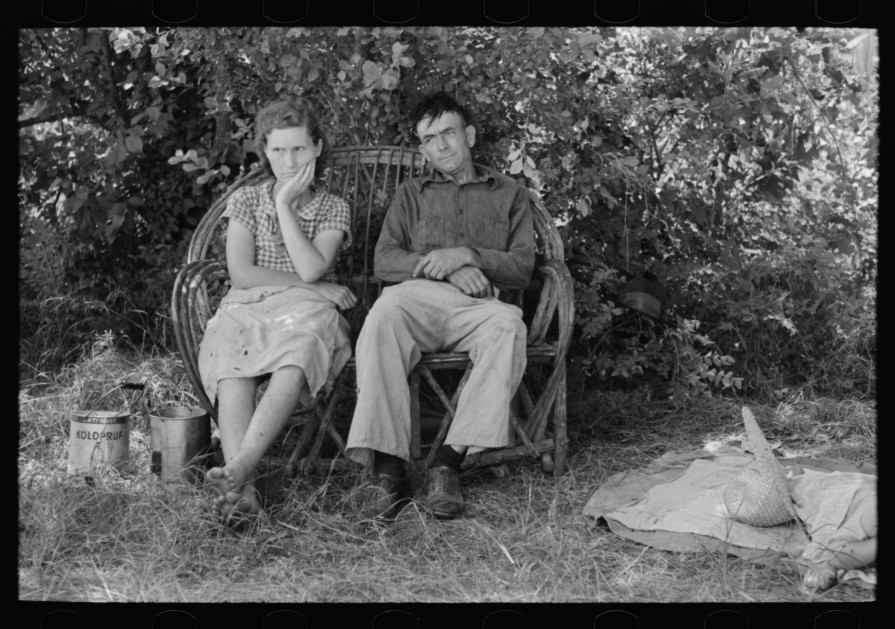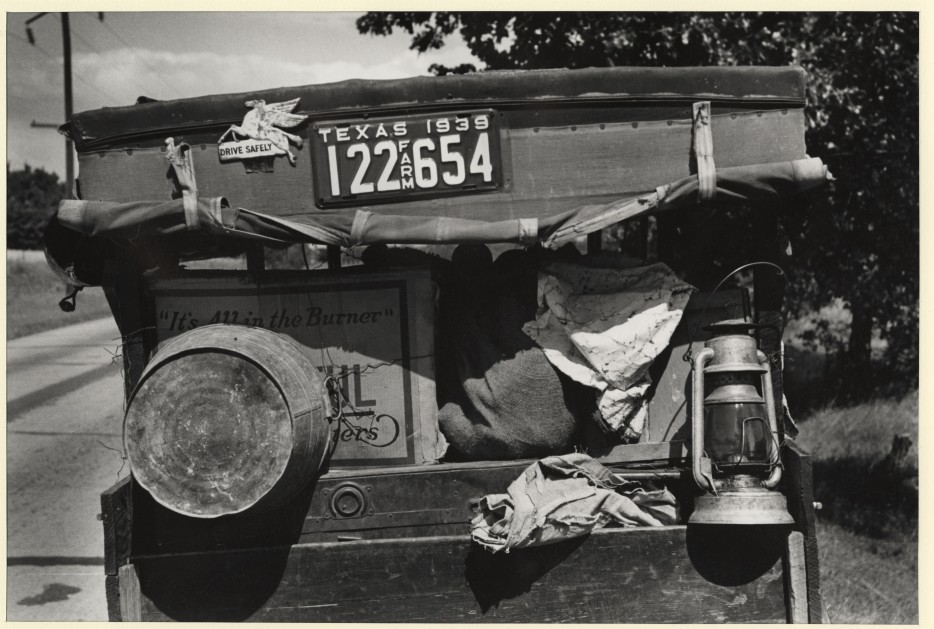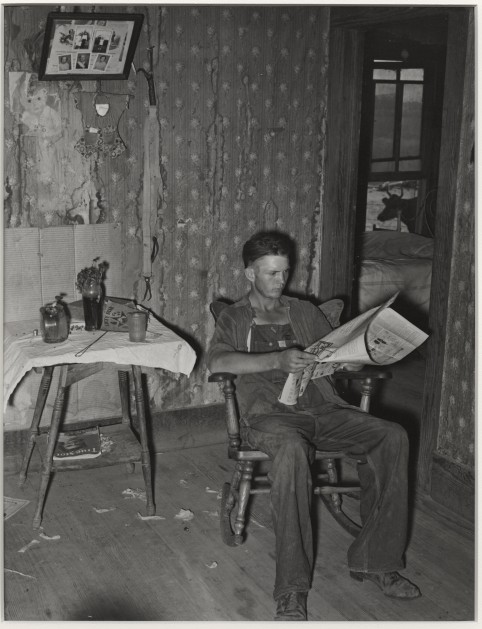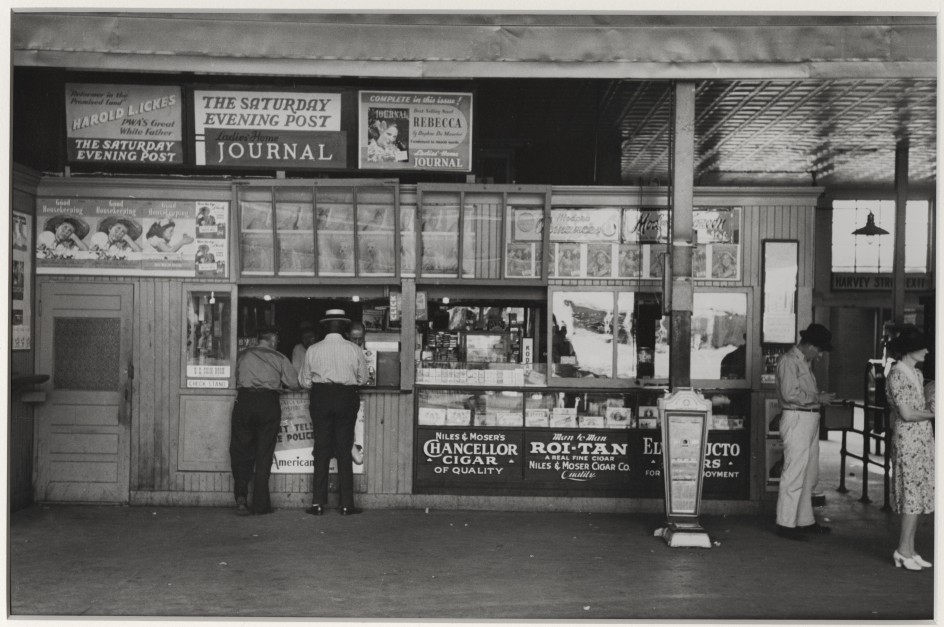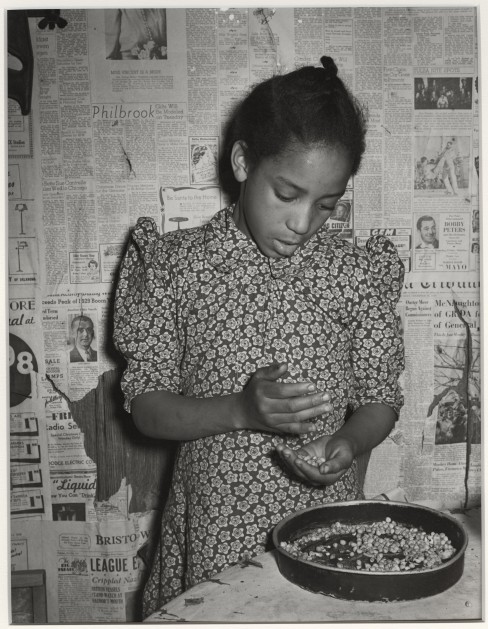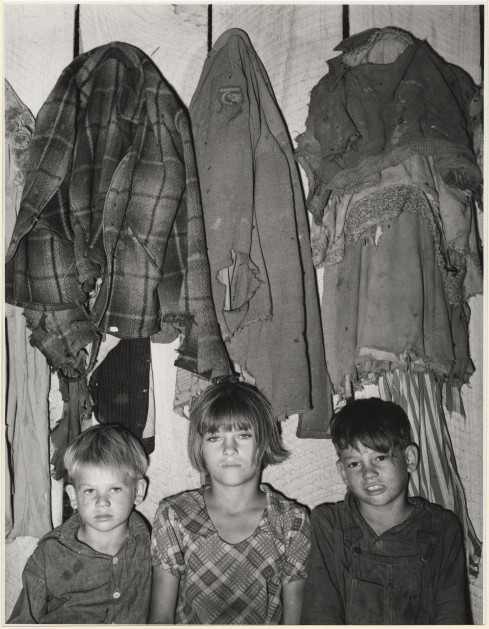Seventy-five years ago, in April of 1939, John Steinbeck published his fictionalized account of the severe hardships facing Oklahoma’s rural poor. His novel, The Grapes of Wrath, told a story of “exodusters” forced from their homes by economic and environmental aftershocks of the Great Depression and Dust Bowl.
Inspired by Steinbeck’s tale, social documentary photographer Russell Lee (1903-1986) hightailed it to the Sooner State that same year in search of Okie subjects. Like fellow shooters of the New Deal’s Farm Security Administration (FSA)—such as Dorothea Lange and Walker Evans—Lee was a strong technician with a thirst for adventure and a deep sense of social justice. His prolific output amounted to 30 percent of the FSA’s entire photographic archive and documented the agony, grit and sense of loss in rural America during the “dirty thirties.”
In the words of his FSA colleagues, Lee “took America’s portrait,”and in so doing raised awareness of the grim realities facing rural America during a period of unbearable hardship.
Lee’s black-and-white images of Oklahoma’s extreme hard times from 1939-40 are equal parts tragic and hopeful, cluttered and crisp, historic and enduring. They portray the tragedies and hopes of tenant farmers, migrant families, and everyday people. Lee’s portrayal of dust-covered jalopies overloaded with paltry processions of families en route to California are haunting, and perhaps prophetic, when considered against the current climate of increasing extreme-weather events. As we stare down another severe drought of historic proportions (today 100 percent of California is currently in “severe, extreme, or exceptional drought”), Lee’s direct, obtrusive images of lives laid to waste take on added relevance. Besides being poignant and compelling images, they force us to remember the 1920s rise and crash, which was greatly aggravated by one of the worse man-made environmental disasters in American history. Such arrogant and aggressive agricultural practices not only ravaged the landscape of the Great Plains, but the social and economic landscape as well.
Ironically, the severity of California’s current drought has resulted in a reverse migration movement that inverts the Dust Bowl trend that took desperate families west 75 years ago. Lee’s photographs offer a sobering view of the social and economic havoc that blew during the Dust Bowl. And for this writer, Lee’s very human faces stare back, beg us to remember, and whisper a word of caution about our current environmental course.
Roadside Camp, Wagoner County, Oklahoma, 1939.
A migrant couple rests together on an outdoor wicker bench at a Wagoner, Oklahoma roadside camp. The heat and dirt of the road weigh them down, as do worries of an uncertain future in an unknown place.
Migrant’s Car, Fort Gibson, Oklahoma, 1939.
Lee’s director at the FSA, Roy Stryker, wrote to him in April 1937: “We still need pictures of families on the move with their meager goods piled on trucks and wagons.” Lee’s photograph of one such migrant car is more than just a document of this historical phenomenon; it is a narrative object arrangement that captures the mood of a particular time and place.
Son of a Tenant Farmer Reading the Morning Paper While Waiting for a Noon Meal, 1939.
Lee was one of the first FSA artists to successfully photograph interiors in great detail, largely through his innovative use of multiple flash techniques. His still lifes and interiors often reveal handmade or low-budget objects tilted, stacked or scattered about. While these scenes may simply document the people and interiors he witnessed, their messy arrangements also may hint at distressed lives thrown off balance.
Concession Stand in Streetcar Terminal, Oklahoma City, Oklahoma, 1939.
Not all of Lee’s photographs were dusty and tragic. Some scenes of the Interurban streetcar system and terminal in downtown Oklahoma City were bustling and upbeat. This series documents the business-as-usual lives of station masters, operators, and commuters who seemed to thrive despite the hard times.
Daughter of Pomp Hall Preparing Peas for Supper, 1940.
The interior walls of the Hall family shack are covered with newspaper, likely an attempt to keep out wind and dust. Notice the journal headlines behind the girl’s right ear, announcing a masterpiece on view at the newly opened Philbrook Art Museum. Subtle notes of life’s incongruities, often relayed through the printed word, the use of signs, or the contrasting use of patterned surfaces, are a hallmark of Lee’s style.
Children of Tenant Farmer in Their Home, McIntosh County, Oklahoma, 1939.
In this group portrait, Lee poses three young children of a tenant farmer against a wall, just below disheveled coats and heaped rags. The young subjects stare back at the viewer with sad eyes as if asking for a chance. Lee’s children often appear as tragic victims in an unnaturally cruel and chaotic world.
“Hard Time Oklahoma, 1939-40: The Documentary Photography of Russell Lee,” an exhibit of Lee’s photographs, will be on view at Philbrook Museum of Art in Tulsa through Oct. 26. For hours and directions, visit philbrook.org or call 918-749-7941.
Originally published in This Land, Vol. 5, Issue 19, October 1, 2014.

